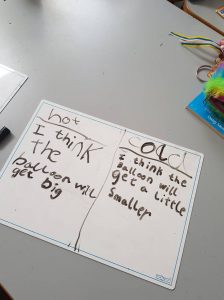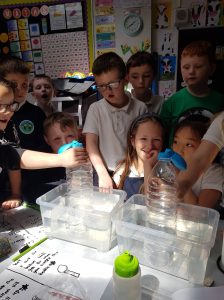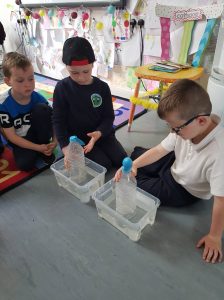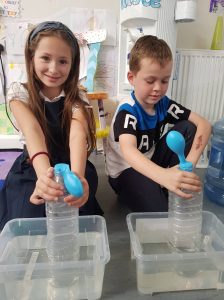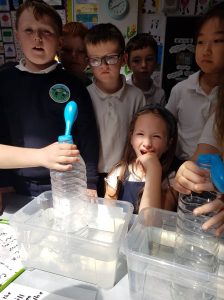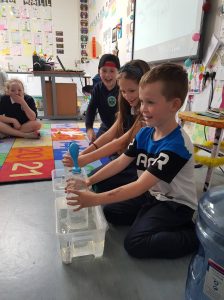First Class have been learning all about hot air balloons in SESE.
Firstly we all shared what we know about hot air balloons already and looked at pictures of different hot air balloons. We then watched videos of hot air balloons in action and were all amazed at how they moved through the sky. We began asking lots of questions about hot air balloons such as ‘Why are they called hot air balloons?’ and ‘How do hot air balloons float in the sky?’. From watching the videos we were very interested in the use of fire to heat the air in the envelope of the hot air balloon. We decided to investigate ‘What happens to air once it is heated?’
We discussed the importance of fair testing before beginning our investigation and decided it was something we were going to work really hard to achieve throughout our experiment. We used the same sized bottles, the same sized balloons and the same sized plastic containers. We also measured the water before beginning to ensure we used the same amount of hot water as cold water.
To investigate this we decided to heat air in plastic bottles. We stuck a balloon at the top of each bottle. To heat the air inside the bottles we used water. We placed one bottle in hot water for one minute and one bottle in cold water for one minute. We observed any changes in the balloon at the top of the bottle.
Before beginning we made predictions about what would happen to the air inside the cold bottle and what would happen to the air inside the hot bottle.
We were surprised at how quickly the balloon changed in the hot water!
We observed that the balloon on top of the bottle placed in the hot water began to expand and stand up while the balloon on top of the bottle placed in the cold water didn’t move at all.
We concluded that when air is heated it expands and rises. We now understand why fire is used to heat the air in hot air balloons and how hot air balloons got their name!


